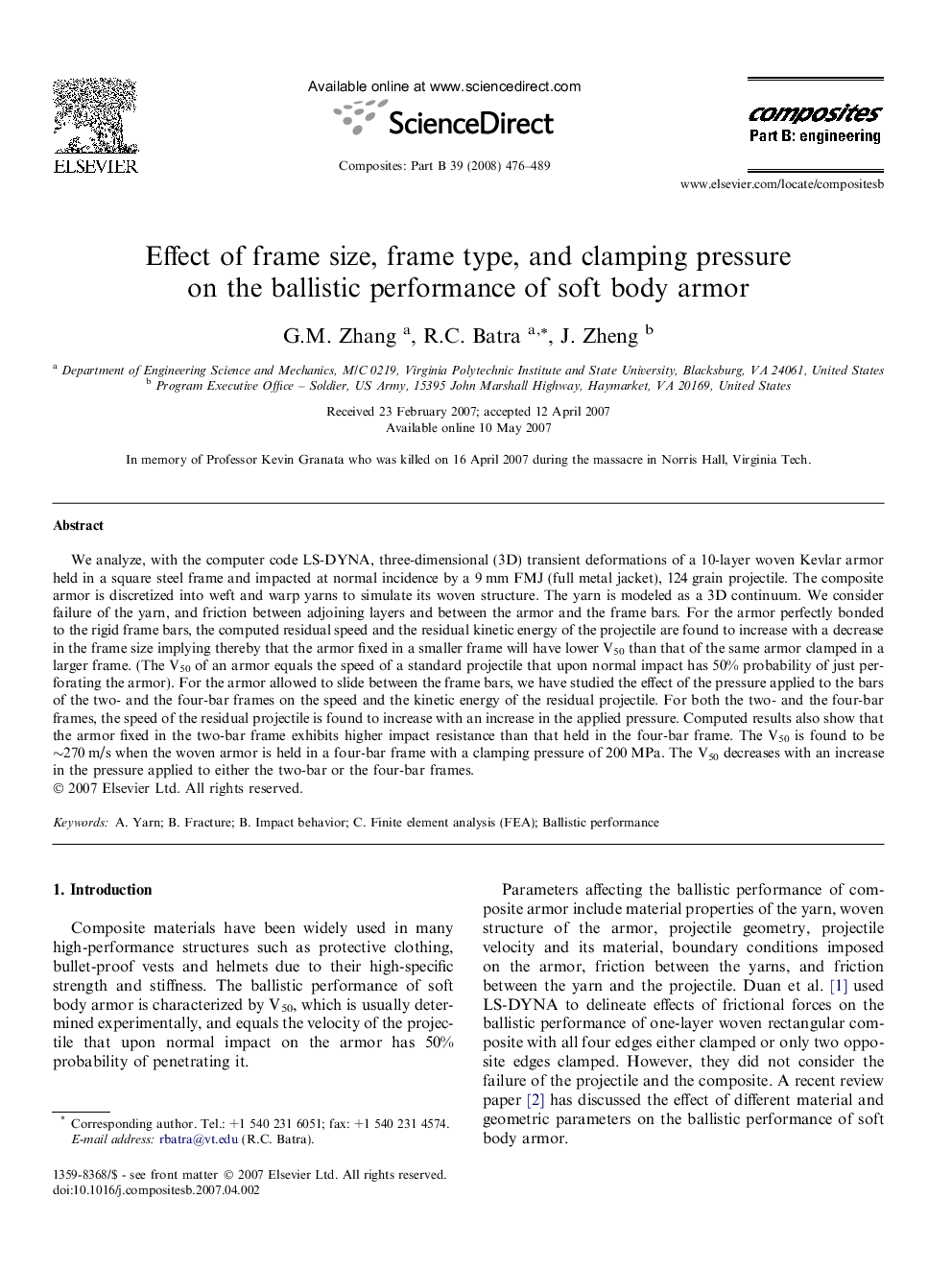| کد مقاله | کد نشریه | سال انتشار | مقاله انگلیسی | نسخه تمام متن |
|---|---|---|---|---|
| 819592 | 906571 | 2008 | 14 صفحه PDF | دانلود رایگان |

We analyze, with the computer code LS-DYNA, three-dimensional (3D) transient deformations of a 10-layer woven Kevlar armor held in a square steel frame and impacted at normal incidence by a 9 mm FMJ (full metal jacket), 124 grain projectile. The composite armor is discretized into weft and warp yarns to simulate its woven structure. The yarn is modeled as a 3D continuum. We consider failure of the yarn, and friction between adjoining layers and between the armor and the frame bars. For the armor perfectly bonded to the rigid frame bars, the computed residual speed and the residual kinetic energy of the projectile are found to increase with a decrease in the frame size implying thereby that the armor fixed in a smaller frame will have lower V50 than that of the same armor clamped in a larger frame. (The V50 of an armor equals the speed of a standard projectile that upon normal impact has 50% probability of just perforating the armor). For the armor allowed to slide between the frame bars, we have studied the effect of the pressure applied to the bars of the two- and the four-bar frames on the speed and the kinetic energy of the residual projectile. For both the two- and the four-bar frames, the speed of the residual projectile is found to increase with an increase in the applied pressure. Computed results also show that the armor fixed in the two-bar frame exhibits higher impact resistance than that held in the four-bar frame. The V50 is found to be ∼270 m/s when the woven armor is held in a four-bar frame with a clamping pressure of 200 MPa. The V50 decreases with an increase in the pressure applied to either the two-bar or the four-bar frames.
Journal: Composites Part B: Engineering - Volume 39, Issue 3, April 2008, Pages 476–489